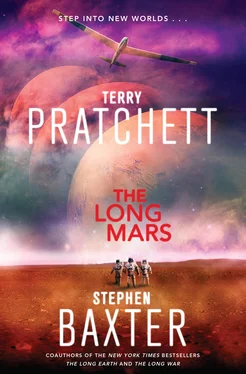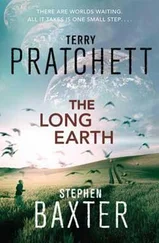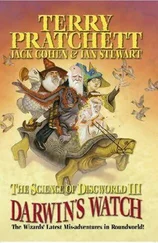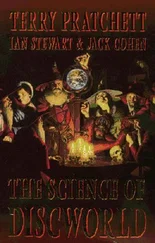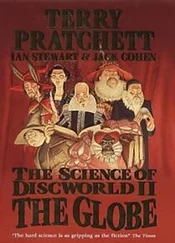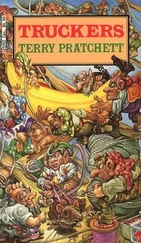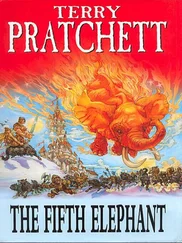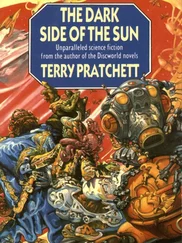And from the windows of the Brick Moon, the Galileo could be seen to hang in empty space.
Their Mars ship was unprepossessing, just two tin cans separated by a long metallic strut, with a single flaring rocket nozzle at the base of one cylinder, a snub-nosed lander aircraft piggybacking on the side of the other, and sprawling solar-cell wings. The spinal strut was adorned with spherical fuel tanks swathed in thick silvered insulation foam; they looked like huge pearls. There was fuel enough, Sally learned, to push the Galileo to Mars and back again. The trip each way would take nine or ten weeks.
The lander was called the MEM, officially the Mars Excursion Module. The upper cylinder to which it clung was the hab module, where the three of them would live for the ride out to Mars, and back. The cladding on the hull would protect them from radiation and meteorites. Light gleamed from windows cut through the cladding, bright and cosy and warm.
They spent twelve hours in the Brick Moon. They stripped out of their pressure suits, which were checked over; they were put through brisk medical tests by an onboard doctor; they had a meal, of paste from tubes and pots, and coffee squirted from bulbs. They all used the bathroom while they were out of their suits.
Then they suited up once more, and crossed into their ship, and Sally Linsay was that bit further away from Earth, and closer to Mars.
EARTH WEST 1,617,524: more than a million and a half worlds from the Datum, the original world of mankind, the Armstrong and Cernan hovered in a washed-out blue sky.
And below, on a green scrape amid arid wilderness on this late January day, smoke rose from the ruins of a city.
Already, just sixteen days into the journey of the Armstrong and Cernan , Maggie was far from home. She tried to picture, in a kind of human sense, just how far. For example, they had left behind the bulk of the Long Earth’s population in just a few hours . After Step Day there had been pulses of migration outward into the Long Earth, first the early wanderers, then the purposeful trekkers, and a new wave once twain technology was available and you could ride to your destination rather than walk. Then had come the mass flight from the Datum after Yellowstone, an evacuation of millions, unplanned and unprovisioned, that had overwhelmed all that had gone before.
Even following that, however, the populations of mankind were still relatively concentrated, with a bias towards the ‘centre’, the Datum and the worlds of the Low Earths. Further out there was a long, long tail, out through the thick bands of more or less similar Earths that humans had given such labels as Ice Belt or Mine Belt or Corn Belt. Valhalla, at around West one point four million, the greatest city in the deep Long Earth, was another useful marker point. That was the limit of the great twain-driven trade routes that had encouraged a certain cultural unity across the developing new worlds. More practically, it was about the furthest point at which you could expect the outernet to work.
But mankind’s colonization wavefront had spread further yet, thinning out into the still stranger, still less familiar worlds beyond Valhalla. Such as this one. Now Maggie Kauffman stood with her officers in the science section of her ship’s observation galleries, as Gerry Hemingway prepared to brief them on this world, showing imagery taken from the ground and a nanosat in orbit: tentative maps, geological and atmospheric profiles, classifications and analyses.
And all the while that ruined city was spread out beneath the ship’s prow, a tangle of dirt tracks and walls and field boundaries. It looked from the air as if it had been smashed flat and then burned out, leaving great blackened scars on the ground – though it was still inhabited, as you could tell from the smoke rising from scattered hearths. Everybody on both craft was a veteran of Yellowstone, of rescue and retrieval operations, and the devastation brought back harsh memories.
There were humans down below. The Armstrong hovered over a small huddle of bubble tents, a scraping of tyre tracks, a couple of heavy off-road vehicles. People had come to study this place. But the city itself had been built, not by humans, but by a race of alien sapients. It seemed almost incredible to Maggie to think of that, even as she stood here looking down on a city whose name, translated into human tongues, was something like ‘The Eye of the Hunter’. A city that had been built by the race called the beagles.
The three trolls were on the deck, huddled together, peering down at the ruins. They hooted their way through what sounded to Maggie like a softly sung but highly complex version of a funereal hymn, ‘Abide With Me’.
For this briefing Maggie had assembled the shore party she was planning to send down to the city. Maggie herself would lead. Wu Yue-Sai was here, as a gesture of cross-cultural friendship with the Chinese. Maggie had never encountered the beagles in person herself, but Joe Mackenzie, her chief medical officer, had relevant expertise; during the post-Yellowstone years he had actually spent time here as part of some kind of biological-stroke-cultural mission – a jaunt he’d told her virtually nothing about.
Wu looked like she was full of nothing but honest eagerness and curiosity. Mac, on the other hand, never the cheeriest of souls, glowered down at the city, almost hostile.
‘Hey.’ Maggie touched his shoulder. ‘You OK?’
‘I don’t know why you want me in this party.’
‘Because you worked here. Even though you never told me about it.’
He avoided her eyes. ‘Saw enough of this place back then. Look, why have we stopped? We’re going much further than this. It’s as if Lewis and Clark spent a week hanging out in a Chicago bar before—’
‘Well, we aren’t Lewis and Clark. We’ve got different mission objectives. You’ll see.’
Hemingway was now displaying global maps, images of this particular Earth. Maggie saw a layout of continents not very much different from those of Datum Earth, but not in quite the right places, landmasses that seemed enlarged, or smeared, even joined together: Australia was connected to south-east Asia by a fat neck of land, the Bering Strait was closed. In the heart of all the continents were the yellow-red stains of deserts. The oceans looked shrunken, and even the polar caps were diminished.
Gerry Hemingway said, ‘Some of the climatologists call these worlds Venusian, or Para-Venusian . . . It’s all about water. Datum Earth and Venus seem to be at two ends of a band of possible water content levels, for planets like ours. Our Earth has a lot of surface water in its oceans, of course, and in the air, and cycling around in the mantle. Venus may have started out with a similar water lode but lost it all early on. A world like this is somewhere on the spectrum between the two – significantly drier than Earth, not as dry as Venus. There is life here, even complex life, even sapients, but it’s sparse, isolated. The early Long Earth explorers, including the first Valienté mission, missed this exception. And its inhabitants. Well, you would, unless you took the time to survey the whole planet.’
Yue-Sai shook her head. ‘We always rush, rush across the Long Earth. So we did on the Zheng He . So we will on this wonderful craft! One always wonders what one misses, simply through not having time enough to see. So many worlds, so many wonders.’
Hemingway said, ‘It was only five years ago that the indigenous sapient culture was discovered. Since then, despite the demands of the Yellowstone crisis, an international consortium of universities has funded stations of observers and contact specialists: linguists, cultural analysts. You see one such camp below. And we contacted the local sapients.’ He hit a tab, and the map on his tablet lit up with a scattering of dots, spread around the fringes of the continents, and along the main water courses. ‘Here are the main communities we’ve detected so far. They tend to be small in extent but densely inhabited. That’s something to do with the beagles’ biology; they like to live in close bands. But they have links of communication and trade that span the continents.’
Читать дальше
